Related Research Articles

The National Urban League, formerly known as the National League on Urban Conditions Among Negroes, is a nonpartisan historic civil rights organization based in New York City that advocates on behalf of economic and social justice for African Americans and against racial discrimination in the United States. It is the oldest and largest community-based organization of its kind in the nation. Its current President is Marc Morial.
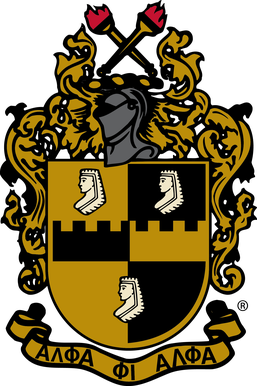
Alpha Phi Alpha Fraternity, Inc. (ΑΦΑ) is the oldest intercollegiate historically African American fraternity. It was initially a literary and social studies club organized in the 1905–1906 school year at Cornell University but later evolved into a fraternity with a founding date of December 4, 1906. It employs an icon from Ancient Egypt, the Great Sphinx of Giza, as its symbol. Its aims are "Manly Deeds, Scholarship, and Love For All Mankind," and its motto is "First of All, Servants of All, We Shall Transcend All." Its archives are preserved at the Moorland-Spingarn Research Center.
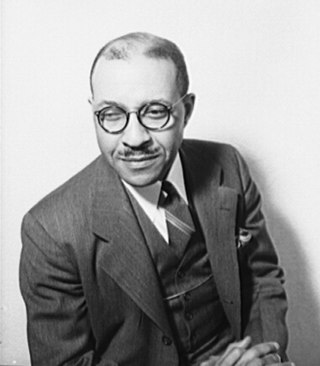
Charles Spurgeon Johnson was an American sociologist and college administrator, the first black president of historically black Fisk University, and a lifelong advocate for racial equality and the advancement of civil rights for African Americans and all ethnic minorities. He preferred to work collaboratively with liberal white groups in the South, quietly as a "sideline activist," to get practical results.
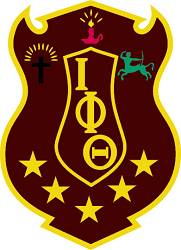
Iota Phi Theta Fraternity, Inc. (ΙΦΘ) is a historically African American fraternity. It was founded on September 19, 1963, at Morgan State University in Baltimore, Maryland, and is currently the 5th largest Black Greek Lettered Fraternity. Members of the close-knit afrocentric fraternity proudly embrace the organization’s youth, uniqueness, individualism and modern idealism. As a contemporary organization, many members have had the great honor of meeting, fellowshipping with and/or engaging in personal or virtual discussions with one or more of their founders. Today there are over 301 undergraduate and alumni chapters, as well as colonies located in 40 U.S. states, the District of Columbia, The Bahamas, Colombia, South Korea, and Japan.
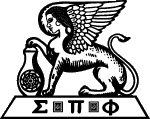
Sigma Pi Phi (ΣΠΦ), also known as The Boulé, founded in 1904, is the oldest fraternity for African Americans among those named with Greek letters. The fraternity does not have collegiate chapters and is designed for professionals at mid-career or older. Sigma Pi Phi was founded in Philadelphia, Pennsylvania.
Kerry G. Johnson is an African-American cartoonist, graphic designer, art director, caricaturist and children's book illustrator. He specializes in caricatures but has created cartoons, illustrations and news graphic work in his career in news and publication design.
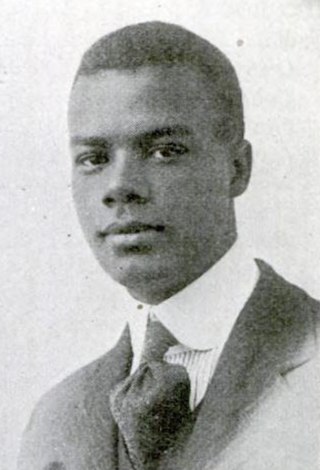
Lester Blackwell Granger was an African American civic leader who organized the Los Angeles chapter of the National Urban League (NUL) and headed the league from 1941 to 1961.
Franklin Hall Williams was an American lawyer and civil rights activist. As an assistant to Thurgood Marshall, he represented the National Association for the Advancement of Colored People before courts in criminal cases throughout the American South. In 1950, he was appointed director of the NAACP's western region, where he directed drives involving open housing, school desegregation and civil rights.
Donald Gaines Murray was an American attorney, the first African-American to enter the University of Maryland School of Law since 1890 as a result of winning the landmark civil rights case Murray v. Pearson in 1935.
Desegregation of the Baltimore City Public Schools took place in 1956 after the United States Supreme Court ruled, in the case of Brown v. Board of Education, that segregation in schools went against constitutional law. Desegregation of U.S. schools was part of the civil rights movement. The events that followed desegregation in Baltimore, were important to the civil rights movement across America. Recent scholarship has identified Baltimore's desegregation as an important precursor to the Greensboro sit-ins.
The African-American upper class is a social class that consists of African-American individuals who have high disposable incomes and high net worth. The group includes highly paid white-collar professionals such as academics, engineers, lawyers, accountants, doctors, politicians, business executives, venture capitalists, CEOs, celebrities, entertainers, entrepreneurs and heirs. This social class, sometimes referred to as the black upper class, the black upper middle class or black elite, represents one percent of the total black population in the United States.
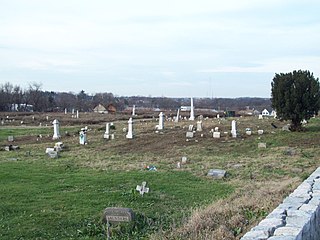
Mount Auburn Cemetery is a historic African American cemetery and national historic district in Baltimore, Maryland, United States. Overlooking the Middle Branch of the Patapsco River to the east, Baltimore's Downtown to the north and railroad tracks to the south, Mt. Auburn Cemetery is surrounded by the Cherry Hill, Westport, Mt. Winans and Lakeland communities.
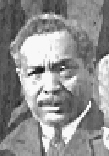
William Ashbie Hawkins (1862–1941) was a lawyer in Baltimore, Maryland, who litigated prominent civil rights cases. One of Baltimore's first African American lawyers, he was born in Lynchburg, Virginia, on August 2, 1862, to Reverend Robert and Susan Cobb Hawkins. One of Hawkins grandsons, Cromwell Ashbie Hawkins West, fabricated a Native American identity for himself and went by the name "Red Thunder Cloud".
Raymond V. Haysbert Sr. was an American business executive and civil rights leader during the second half of the 20th century in Baltimore, Maryland. During World War II, he served in Africa and Italy with the renowned Tuskegee Airmen. Haysbert joined Baltimore-based Parks Sausage Company in 1952, becoming CEO as it grew into one of the largest black-owned U.S. businesses. In later years, he was active in politics and the American civil rights movement. Haysbert was chairman of the Greater Baltimore Urban League when he died at age 90 in 2010.

Paul Samuel Henderson was an African-American photojournalist for the Baltimore Afro-American newspaper from 1929 through circa 1960. He became well known for taking pictures of large groups and distant objects atop a ladder he carried. Henderson primarily photographed people, including church groups, politicians, graduations, local college and university groups, weddings, events during the Civil Rights Movement, and more. He was a member of the National Association for the Advancement of Colored People, a vestryman at St. James Church, charter member of the Druid Hill Avenue Neighborhood Club, assistant treasurer of a local Frontiers International club, and supported The Salvation Army.

The Baltimore Afro-American, commonly known as The Afro or Afro News, is a weekly African-American newspaper published in Baltimore, Maryland. It is the flagship newspaper of the AFRO-American chain and the longest-running African-American family-owned newspaper in the United States, established in 1892.
Norris Bumstead Herndon was a prominent African-American businessman, Harvard Business School MBA graduate, philanthropist, member of Alpha Phi Alpha fraternity, and second President of the historic African-American-owned Atlanta Life Insurance Company.

Harry Truman Pratt Sr. was an American educator, artist, publisher, businessman, and civic leader. He was the first African American graduate of the Maryland Institute of Art and Design, currently the Maryland Institute College of Art, in 1895.
William Clarence Hueston Sr. was an American lawyer, magistrate, and community leader. Hueston was the first African-American graduate from the University of Chicago Law School. He served as the first African-American judge in Gary, Indiana, as president of the National Negro Baseball League, and as the first African-American Assistant Solicitor in the United States Post Office Department within the Hoover administration. Hueston practiced law in private firms and was an influential activist for African-American civil rights throughout his life. An active member of fraternal organizations, Hueston served as education commissioner and grand secretary within the Improved Benevolent and Protective Order of the Elks of the World.
References
- 1 2 Baltimore News Post, February 16, 1959
- 1 2 3 Obituary of Furman L. Templeton, Washington Post, February 16, 1970
- 1 2 "Templeton Gets Secretarial Post at Urban League," Afro-American; January 4, 1941 Pro-Quest Historical Newspapers Baltimore Afro-American (1893-1988) 24
- ↑ "FEC Ponders Union's Bias," Afro-American; September 13, 1941, Pro-Quest Historical Newspapers Baltimore Afro-American (1893-1988) 10
- 1 2 "Templeton Seeks FSA Probe of Perryman, Md., Land Deal," Afro-American; September 13, 1941 Pro-Quest Historical Newspapers Baltimore Afro-American (1893-1988)
- 1 2 Templeton, Furman L., Baltimore Urban League, "Occupational Galaxy: Reach For The Stars…" (Baltimore, MD: Baltimore Urban League, 1940).